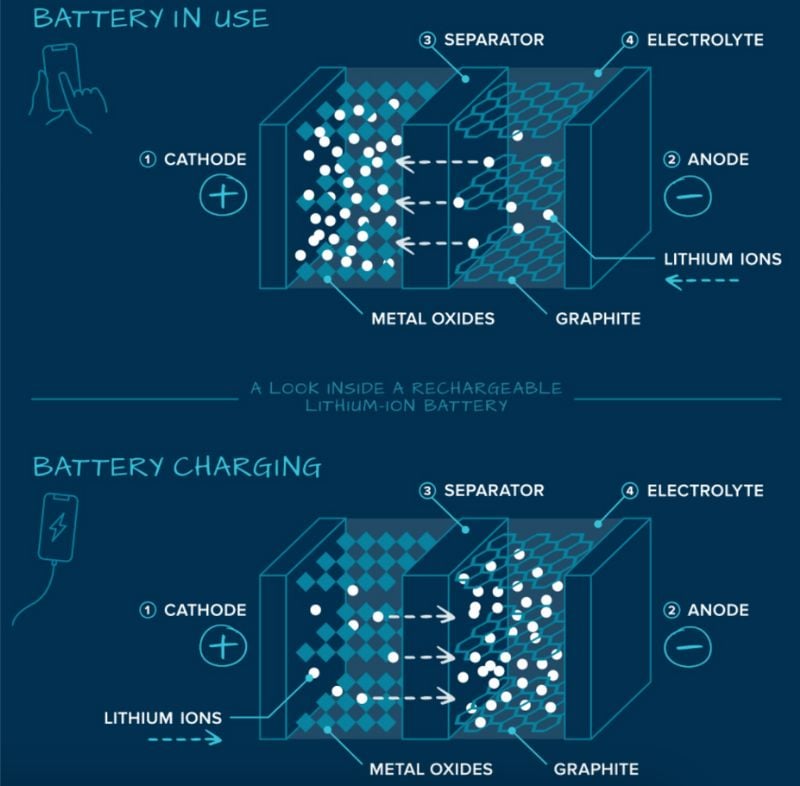Hopping Battery Ions Show ‘Memory’ When Laser Zapped
A study exploring ionic conduction persistence through nonlinear optics reveals ions display “memory” when hopping through solid electrolytes.
Innovation in battery technology is essential for meeting the ever-growing demand for energy storage across multiple sectors, such as storage systems and electric vehicles. However, meaningful innovations require delving into batteries at the atomic level of operation.
Recently, scientists from Oxford, Stanford, and Newcastle University conducted laser experiments to excite battery ions to explore their memory-retaining behavior. This article discusses the challenges encountered in enhancing battery technology and how the current development addresses these challenges.
Researchers built a laser to investigate the behavior of battery ions. Image used courtesy of Oxford University (by Andrey D. Poletayev)
Diving Into the Battery
Lithium ions are essential for electrochemical reactions in a lithium-ion battery. They shuttle between the anode and cathode via the electrolyte.
Within the heart of every battery lies a universe of atomic interactions, guiding the flow of power fueling the modern world. Inside the battery, ionic transport involves ions' macroscopic diffusion and microscopic migration, influenced by gradient forces like concentration, chemical potential, and electric field. Despite this, current innovation methodologies in battery technology often rely on macroscopic observations, offering limited insights into the underlying atomic-scale processes.
The internal structure of a lithium-ion battery. Image courtesy of Argonne National Laboratory
This deficiency hampers advancements in battery technology, as it impedes precise control over ion transport and behavior. The real challenge of innovating battery technology is intricately linked to understanding ion transport at the atomic level. Researchers can discern the factors influencing ion diffusion, migration, and electrochemical reactions by scrutinizing atomic-scale interactions. Without exploring the nuanced mechanisms governing ion movement within batteries, optimizing their performance, efficiency, and safety remains elusive.
To overcome this obstacle, researchers must delve deeper into the atomic-level dynamics of ion transport. By illuminating the interactions between ions and the battery's components at the atomic scale, scientists can identify novel materials and design principles to enhance battery performance.
Diving Deeper Into the Battery
In a joint venture, researchers from SLAC National Accelerator Laboratory and Oxford, Stanford, and Newcastle Universities observed some weird behavior while energizing a battery's hopping ions. The researchers then conducted experiments demonstrating how ions in solid electrolytes exhibit memory of their previous positions.
Solid-state batteries, crucial for energy storage in various applications, rely on the movement of ions between electrodes through the electrolyte. Despite appearing as a smooth flow, ions hop erratically within the atomic lattice, challenging their prediction and detection. Through innovative laser experiments, researchers observed ions briefly reversing direction upon receiving a voltage pulse, indicating memory of prior positions. This "fuzzy memory" lasts for mere billionths of a second but holds significant implications. The discovery helps predict ion behavior and design materials for enhanced battery performance.
The time domain transients during hopping. Image courtesy of Poletayev et al.
The study utilized non-linear optical techniques for experimentation. Researchers used thin, transparent crystals of beta-alumina, a high-conductivity electrolyte material featuring tiny channels facilitating fast ion transport. The crystals are a safer alternative to liquid electrolytes. By adjusting the interval between the laser pulse and the measurement, researchers accurately assessed alterations in the speed and preferred trajectory of ions within trillionths of a second following the laser's impact.
Current models assume ions move in a random walk pattern, akin to a drunk person staggering. However, atomic-scale observations refute this notion, highlighting the complexity of ion transport mechanisms. Furthermore, understanding ion behavior at the atomic level is essential for advancing battery technology toward a more sustainable future.
A Quantum Leap in Battery Technology
By unraveling the mysteries at the atomic level, researchers open doors to transformative applications, promising enhanced energy efficiency, sustainability, and safety. This research offers a new direction for future breakthroughs in energy storage and sustainable solutions to power our increasingly electrified world.









